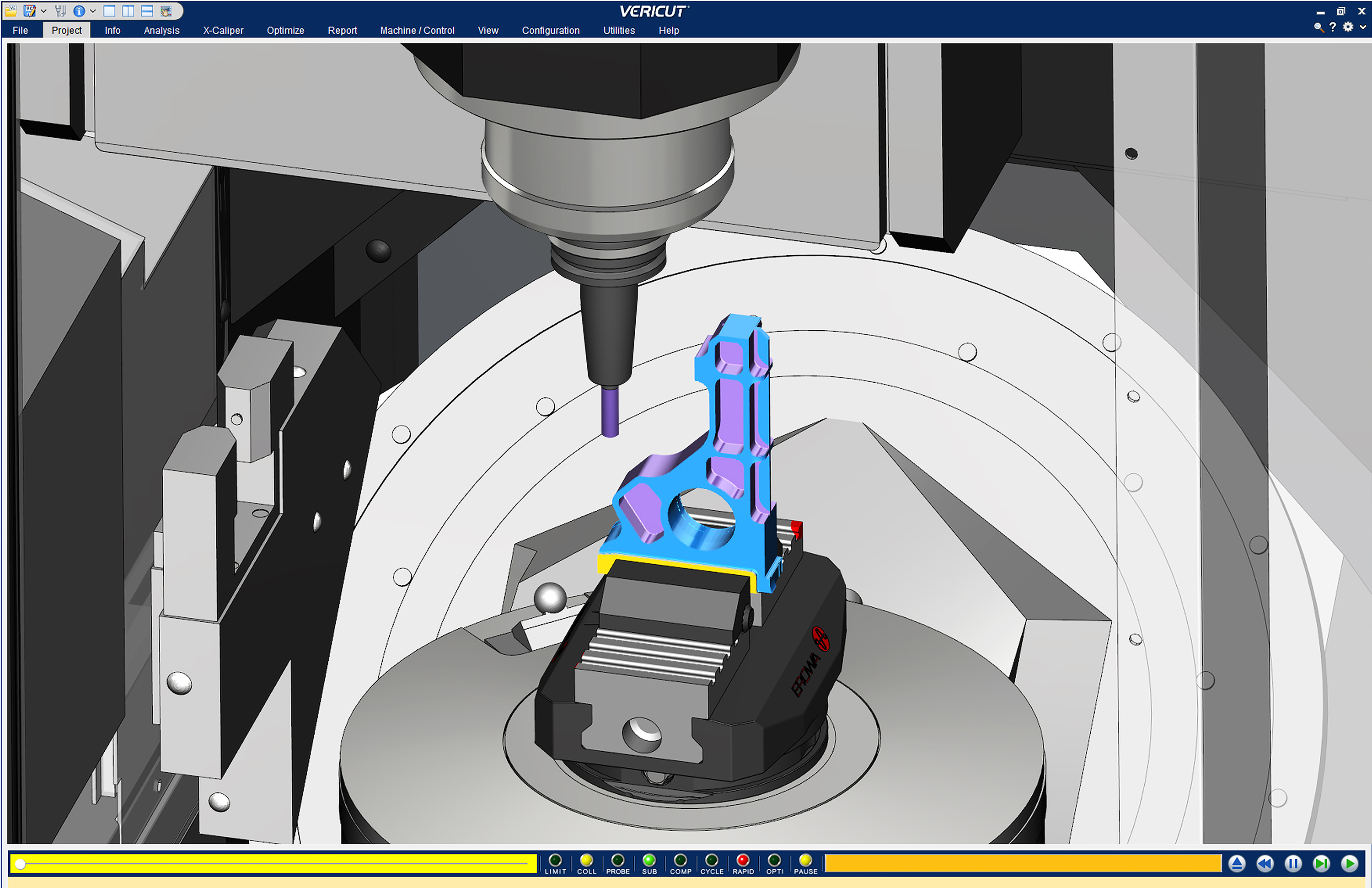

- #HAAS MILL TOOL PATH SOFTWARE HOW TO#
- #HAAS MILL TOOL PATH SOFTWARE SOFTWARE#
- #HAAS MILL TOOL PATH SOFTWARE PLUS#
The distance from the center of the tool should be the tool radius plus some clearance. You’ll want to start your toolpath with just enough distance from the part, so the face mill doesn’t plunge into the stock material. This will provide the highest rates of material removal. We recommend using a Face Mill for most parts.

You’ll use facing at the start of your machining process to remove any excess material down to the topmost flat face of a part. In the sections below, we’ll be covering each toolpath in detail, along with some guidelines to consider.
Knowing how to use each one and understanding their limitations is the key to machining success. The plan that was just laid out uses 10 different milling toolpaths. The 10 Milling Toolpaths You’ll Need to Use
Check with your machine control and CAM software to make sure you understand how to enter the compensation value. This will allow the angled movement of CDC to kick in fully before making contact with your material. Correctly implementing CDC to machine 2D features accurately is an important part of a successful machining practice. We always recommend activating CDC while the tool is away from the part. You can find your compensation value by subtracting actual dimensions from desired dimensions of a part feature. This will basically align your tool either slightly to the left or right of the originally programmed toolpath. Pre-drills holes to prevent drill drift and to make a chamfer.ĬDC adjusts a toolpath to account for tool wear that can cause inaccuracies in a part. Uses 2D contour and corner round tool to make fillet. Uses a 2D contour and chamfer mill to create 45° angle. Depending on size, a drill could also work here. Roughs and then finishes the circular pocket. Roughs and finishes to the highest flat surface of part. Check out the example below for how we might plan out the machining of a simple prismatic part. The tool’s diameter needs to be taken into consideration to ensure that the tool cuts at the desired.Īll of these terms and toolpath types come together in the planning of a 2D machining process.
Toolpath Centerline is the path the tool will take as it moves along a toolpath. Clearance Height is the height a tool moves at between individual operations, usually set to 1.000in above the top of a stock. Retract Height is the height a tool will retract to between moves within the same operation, usually set some safe distance above the feed height. Feed Height is the height a tool will position itself to before starting to feed at the cut feedrate before it enters the material, usually set to some safe distance above the top of stock. Top of Stock designates the top face of the stock being used to make the part, which can be used as a reference point for machining processes. Multiple passes may be needed to get to a final depth. Stepdown is the amount of material that gets removed axially or vertically with each pass of your cutting tool. Stepover determines how much material is removed radially, or left and right, by a tool each time it passes in the XY direction. X, Y, and Z Allowance is the amount of material remaining on either the finished wall (XY) or floor (Z) of a part that needs to be removed in future operations. You’ll find the terms below referenced in nearly every CAM software package. There is also some toolpath lingo that you’ll want to get acquainted with. 75in diameter, milled OD threads of any size, or custom threads. Roughing or finishing pockets of various shapes and sizes.Ĭreating spot drill, tapped, bore, or reamed holes. Machining loops, open pockets, stick fonts, dovetails, keysets, or saw cuts.ĭeburring and creating chamfers using either a tapered mill or center drill.Ĭreating fillets using a Corner Rounding Tool. Familiarize yourself with the toolpaths below, which you’ll encounter in Fusion 360 and other CAM solutions. Toolpath Types and TerminologyĮvery toolpath has a unique behavior and use case. And which of these features needs to be machined from the top versus the bottom? The answer to these questions requires some fundamental toolpath knowledge. How are you going to machine the hole in the center of the part above? You could use a drill, contour, or circular pocket toolpath. Pockets use a 2D Pocket operation, chamfers use Chamfer Milling, and so on.īut then you get to the difficult questions that don’t have such black and white answers. Sometimes this problem-solving process is clear. Many new CNC machinists struggle to plan out their toolpaths, especially as features get more complex.






 0 kommentar(er)
0 kommentar(er)
